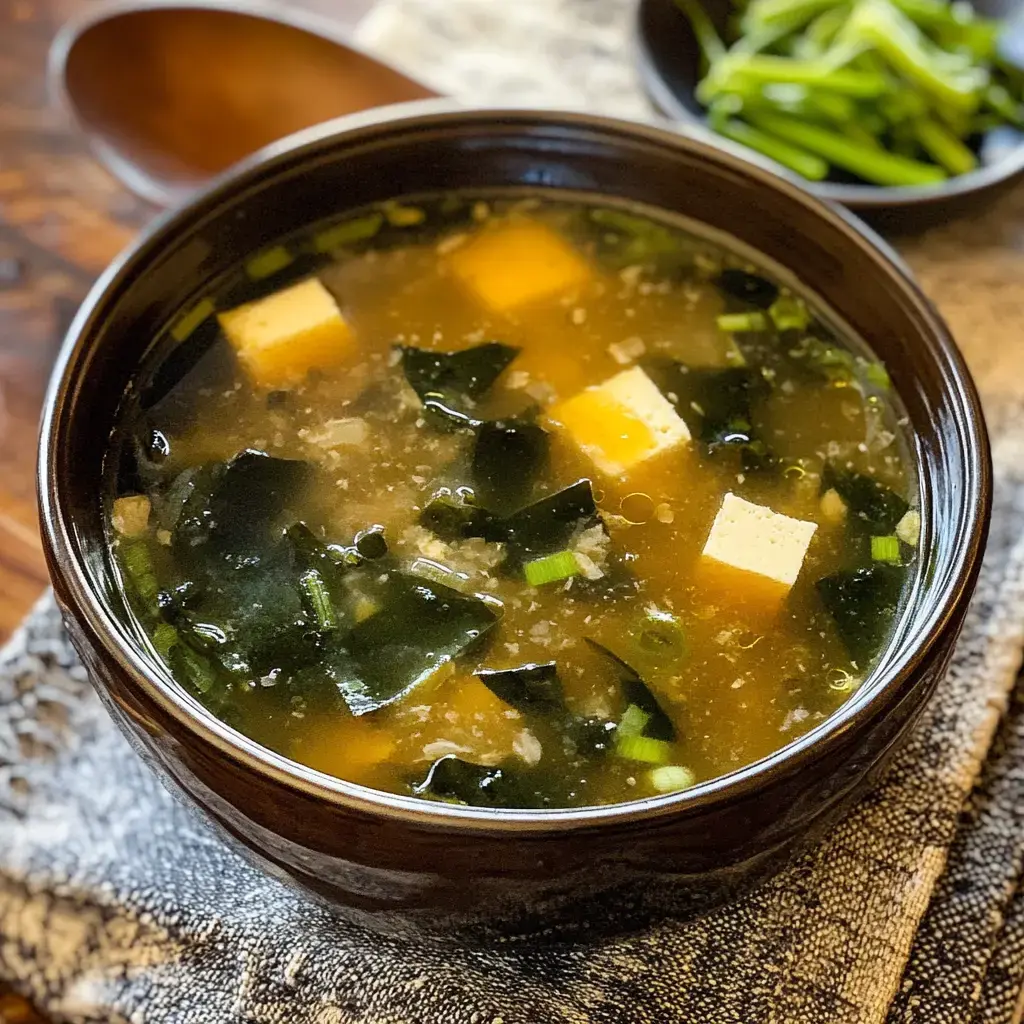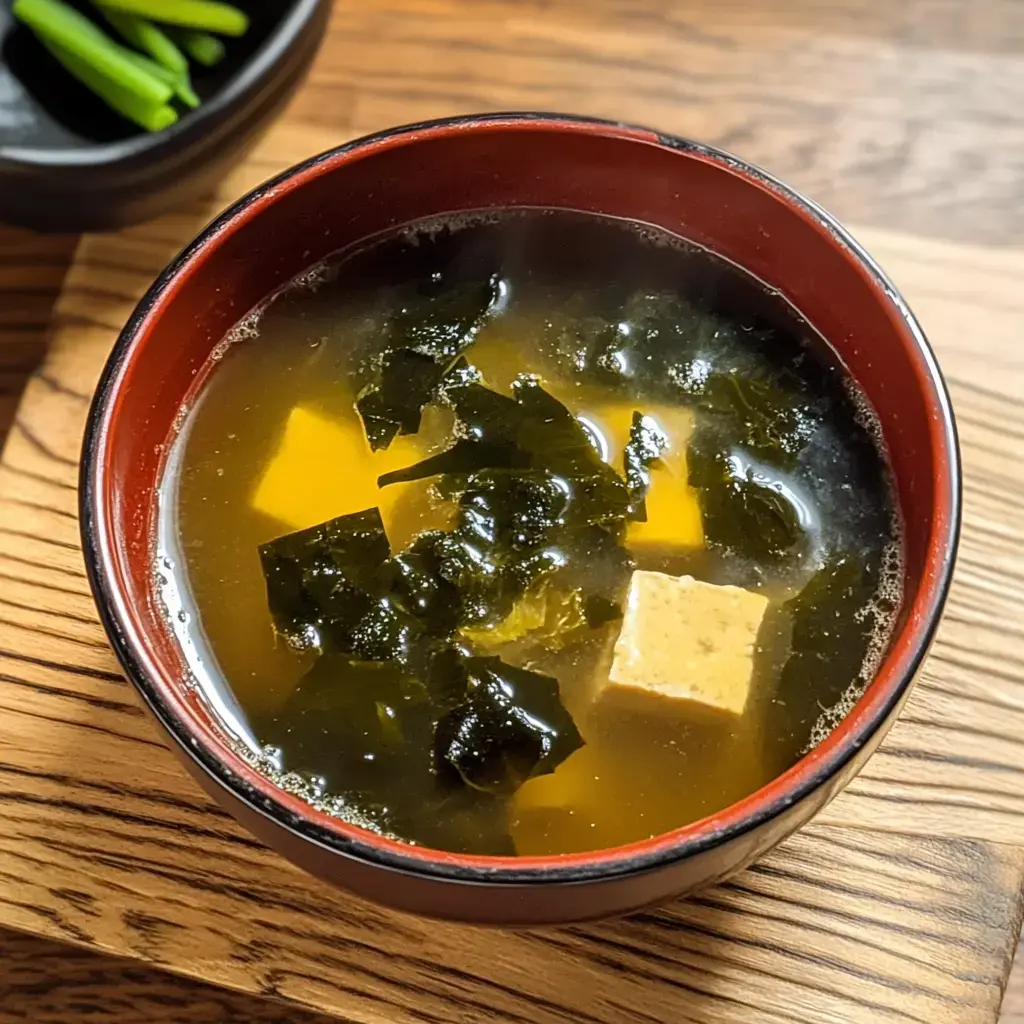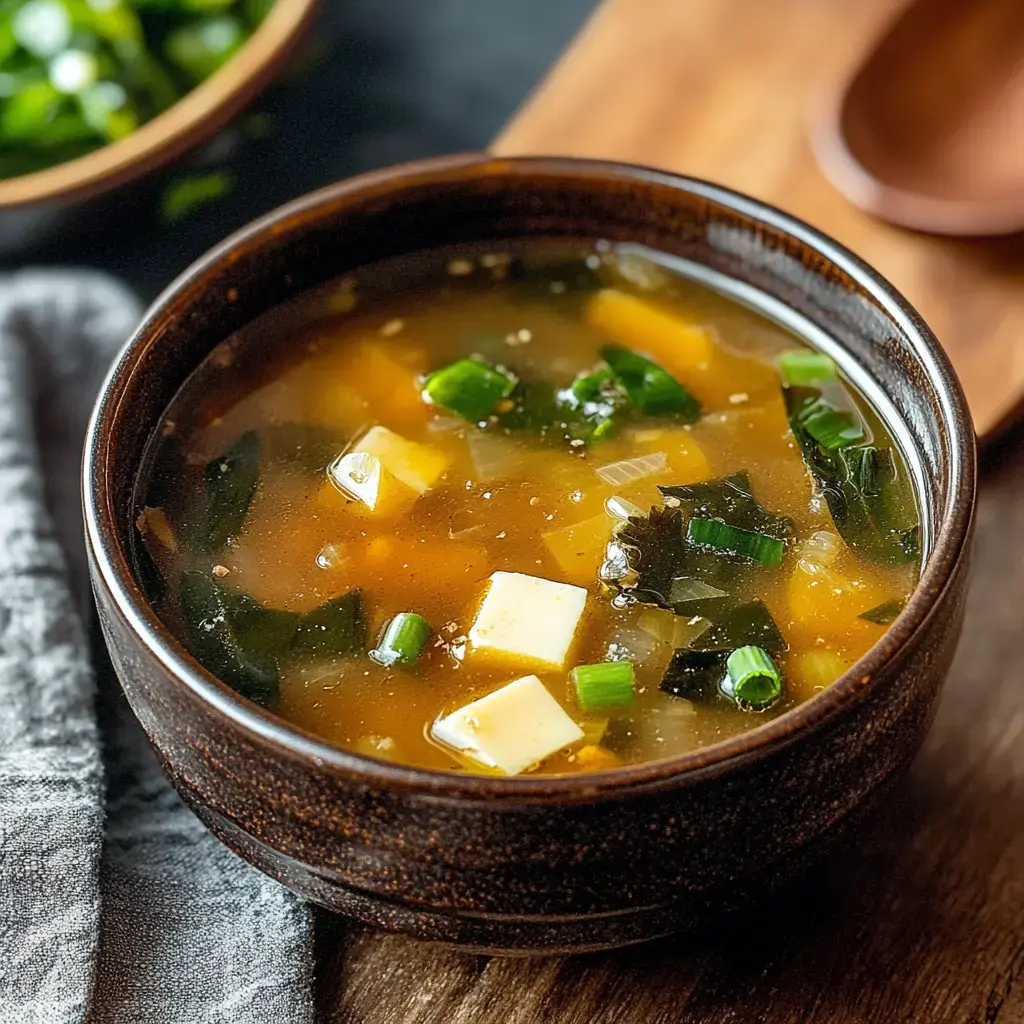 Pin it
Pin it
Let me share the miso soup recipe that transformed my mornings and brought a piece of Japan into my kitchen! After living in Tokyo for a year I was determined to recreate that perfect bowl of comfort I enjoyed every day. The combination of savory dashi gentle miso and silky tofu creates pure magic in a bowl. The first time I served this to my Japanese friend she said it tasted just like home!
Why This Recipe Is Special
This isn't just another soup recipe! The careful balance of homemade dashi and carefully dissolved miso creates layers of flavor that store-bought versions just can't match. Last week when my neighbor was feeling under the weather I brought her a bowl she said it was better than any medicine. Even my kids who usually shy away from 'different' foods ask for seconds!
What You'll Need
- For Perfect Dashi:
- Pure water nothing filtered
- Kombu seaweed
- Katsuobushi bonito flakes
- Patience for the perfect brew
- For The Soup:
- Quality miso paste
- Silken tofu cut into perfect cubes
- Dried wakame seaweed
- Fresh green onions
Let's Start Cooking
- Creating Our Dashi
- First we start with the foundation gently heating our kombu in water. Never let it boil that's the secret to clear flavorful broth! When the katsuobushi goes in the kitchen fills with the most amazing aroma.
- The Miso Magic
- Here's where technique matters! Always dissolve your miso in a little broth first never add it directly to the pot. My Japanese host mother taught me this crucial step it keeps the miso alive and flavorful.
- Adding The Final Touches
- Gently warm the tofu and wakame in your soup watching the seaweed unfold like ocean flowers. Those final sprinkles of green onion bring everything together perfectly!
 Pin it
Pin it
Making It Perfect
Want to know my secrets for the best miso soup? Never ever boil your soup after adding miso it kills the living cultures and dulls the flavor. Let your dashi cool slightly before adding miso paste it helps preserve those precious enzymes. And here's my favorite tip keep your tofu cubes large they'll break up naturally as you eat!
Serving It Up
I love serving this in beautiful ceramic bowls just like they do in Japan. Sometimes I'll add seasonal vegetables like daikon in winter or corn in summer. For breakfast I serve it alongside steamed rice and a perfect soft-boiled egg. The simplicity is what makes it so special!
Fresh Is Best
This soup is best enjoyed fresh but if you need to save some for later keep the miso separate. I often make extra dashi and store it in the fridge then add fresh miso when I'm ready to serve. Each bowl tastes like it was just made that way!
Mix It Up
Don't be afraid to experiment with different types of miso! Sometimes I use white miso for a gentler flavor red miso when I want something stronger. My vegetarian friends love it with mushroom dashi instead of bonito. Once I added sweet potato in winter absolute comfort food heaven!
 Pin it
Pin it
Why This Recipe Matters
This miso soup has become more than just a recipe it's my daily ritual! There's something so centering about starting each day with this nourishing bowl. My kids are learning about different food cultures and the importance of taking time with our food.
The best part isn't just how delicious it is it's seeing everyone discover the comfort of authentic Japanese home cooking! Whether you're making it for breakfast a light lunch or whenever you need warming up this never disappoints. And watching people discover they can create this simple yet profound dish at home? That's what makes cooking so rewarding!
Frequently Asked Questions
- → Why shouldn't miso soup be boiled?
Boiling destroys the beneficial enzymes in miso and diminishes its flavor and aroma. Always add miso after turning off the heat.
- → Can I make dashi ahead?
Yes, dashi can be stored in the refrigerator for 3-5 days or frozen for up to 2 weeks. Add miso only when ready to serve.
- → Why use soft/silken tofu?
Silken tofu has a delicate texture that complements the soup perfectly. It's traditional in Japanese miso soup and melts in your mouth.
- → Can this be made vegetarian?
Yes, use kombu dashi (seaweed only) or add dried shiitake mushrooms for vegan dashi. Skip the katsuobushi (bonito flakes).
- → Why not wash the kombu?
The white powder on kombu contains natural umami compounds. Washing it would remove these important flavor elements.
Conclusion
Miso soup is a traditional Japanese dish that combines the rich umami flavors of dashi stock with the delicate texture of silken tofu and the subtle taste of wakame seaweed. This recipe offers both traditional and vegan preparation methods, allowing home cooks to create an authentic and nutritious meal.
References
Reliable references aided in composing and refining this content.
- Japanese Cooking: A Simple Art by Shizuo Tsuji.
